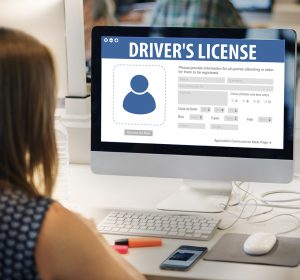Transcript of “The One Leg Stand Field Sobriety Test”
Author: Steven Oberman
Click here to listen to the podcast.
Originally Posted: June 2, 2011
Have you driven by a police officer watching someone standing on one leg on the side of the road? Then you’ve likely observed someone taking a standardized field sobriety test.
This is your host, Steve Oberman, and in this episode I will provide a summary of the standardized one leg stand test. As a certified DUI detection and standardized field sobriety test instructor, I assure you it takes days of classroom and laboratory setting training to thoroughly understand the intricacies of this standardized field sobriety test, so keep in mind that this is only an overview.
This podcast will be much more meaningful if you have first listened to my previous podcast entitled, “The History of Field Sobriety Tests.” So, if you haven’t already listened to that episode, I recommend you do so before continuing.
Now, allow me to describe to you the procedures and scoring of the one leg stand test.
The instructions for this test are given to the subject while the subject stands with his feet together, and arms down at his side until told to start. After that, the subject is told to stand on one leg, holding the other foot approximately six inches off the ground pointed forward so that it is approximately parallel to the ground. While standing, the subject is to count out loud (one thousand and one, one thousand and two, and so on). The subject is to keep his arms at his sides at all times and watch the raised foot. The officer is then supposed to demonstrate a portion of the test before asking the subject to begin.
During the actual performance of the test, the officer is to observe the subject from a safe distance, and remain as motionless as possible during the test so as not to interfere. The officer will take special note of four things, which are called “clues.” These clues include:
- Swaying while balancing;
- Using arms for balance;
- Hopping; and
- Putting the foot down too soon.
You see, this test is supposed to take approximately 30 seconds. Should the officer observe two or more of these four clues, the subject fails this test as the officer may classify the subject’s blood alcohol level as above the legal limit or too impaired to drive safely.
In its original research the National Highway Traffic Safety Administration determined this SFST accurately indicated that a subject’s blood alcohol level was above .10% approximately 65% of the time. This test was the least accurate of the battery of three tests which comprise the standardized field sobriety tests.
But subsequent government research in San Diego, CA reported an 83% accuracy level for the one leg stand test in determining that a subject’s blood alcohol level was above .08%. So it was no longer the least accurate – the walk and turn test took that honor in the San Diego testing.
However, as you may have guessed, I have concerns in the manner in which that study and others were conducted and the conclusions that were reached in those studies. If you try this test while sober, you will likely agree it is difficult to perform without failing. A lawyer experienced in contesting DUI cases can often demonstrate the one leg stand test was given in an inappropriate environment, that instructions were given incorrectly or that the results were interpreted incorrectly.
So, now you have learned more about the procedures and scoring of the one leg stand test, which is part of the National Highway Traffic Safety Administration standardized field sobriety test battery. This test is given by an officer so that a better foundation for an opinion of impairment or estimated blood alcohol content may be made before an arrest decision is reached. This is your host, Steve Oberman, inviting you to join us next time to learn more about the issues relating to the crime of Driving Under the Influence of an Intoxicant.
We hope you enjoyed listening to the DUI law podcast1 produced by the Oberman and Rice Law Firm. You may read about related legal matter on our websites at https://tndui.com/ and http://www.duiknoxville.com or visit our blog at http://www.tnduicenter.com. You may also speak to one of our lawyers by calling (865) 249-7200. Until next time, remember to drive safely.
Portions of this podcast were taken from Mr. Oberman’s text, DUI: The Crime and Consequences, Published by West/Thomson Reuters, 2011.See https://www.tndui.com/oberman-dui-textbooks#tndui
Featured Posts

 April 12, 2024
April 12, 2024
New DUI Law Alert–Work Release Requirement Update
The Tennessee Legislature passed several new laws that became effective on January 1, 2024. One DUI related law involves the Tennessee Work Release Program. Work release is a form of probation that may be used, in certain circumstances, after a person has […]
Read More
 April 08, 2024
April 08, 2024
Reinstating Your Tennessee Driver’s License
If the Tennessee Dept. of Safety and Homeland Security has suspended or revoked your driver’s license, you are not allowed to drive again until you have obtained a valid driver’s license. This means that you cannot reuse your old driver’s […]
Read More
 March 27, 2024
March 27, 2024
Tennessee Highway Patrol Traffic Enforcement and Sobriety Checkpoints
The Tennessee Highway Patrol has planned several Sobriety Checkpoints (also commonly referred to as a “DUI Roadblocks”) throughout this spring in East Tennessee. Motorists in Campbell County can expect a DUI Roadblock on March 29, 2024 on State Route 116 at […]
Read MoreContact
Office
Oberman & Rice
550 Main Street
Suite 730
Knoxville, TN 37902
Phone Number
(865) 249-7200
(865) 540-1696 (fax)
GPS Coordinates
Long: 35.970504
Lat: -83.914776
Useful Links
contact us today for a free consultation
We reply to non-urgent after-hours requests for consultation within 24 hours. For after-hour emergencies, please call us at (865) 249-7200.














